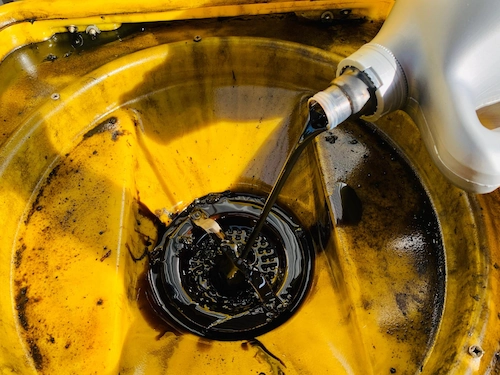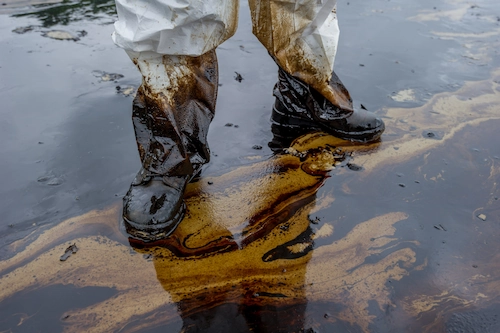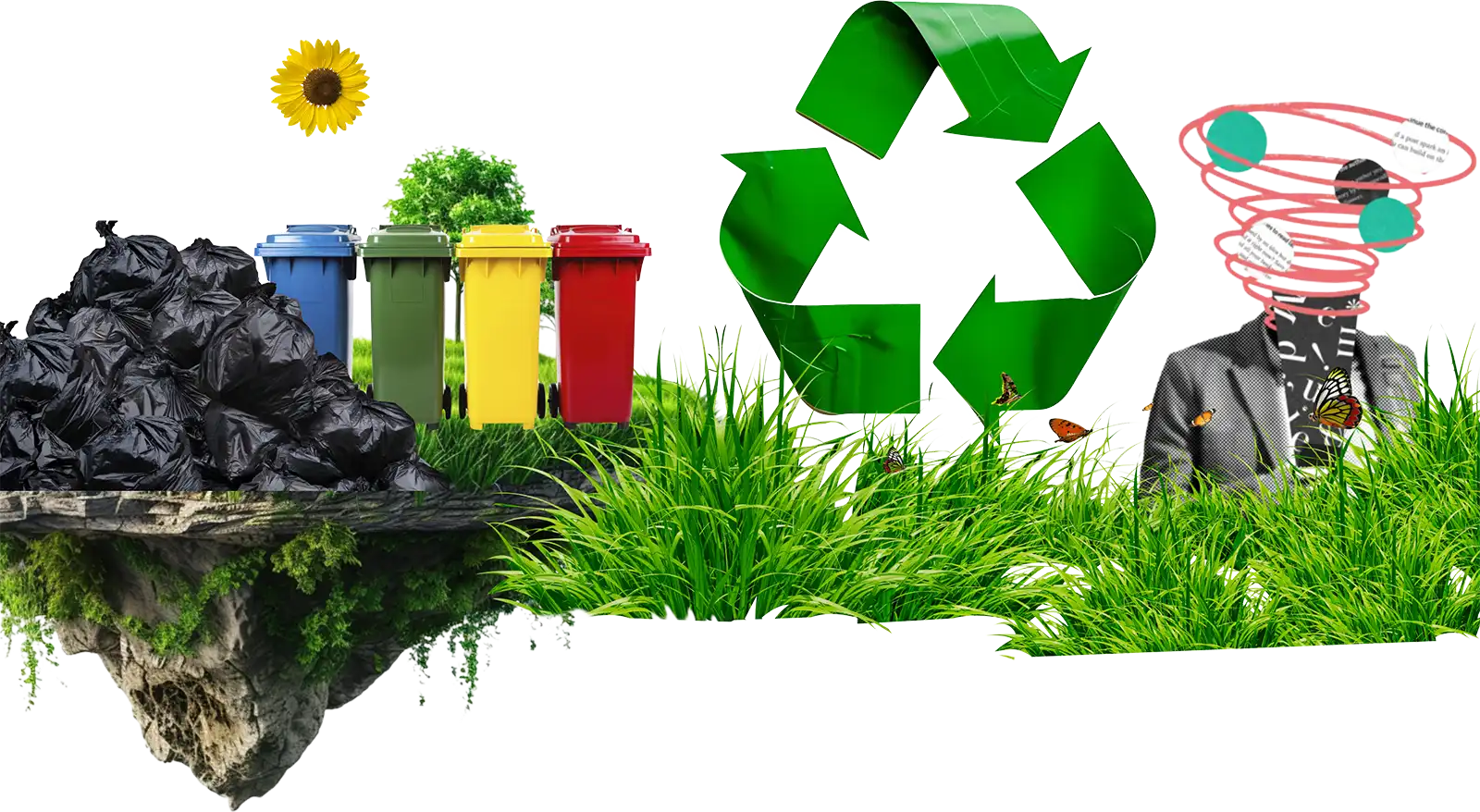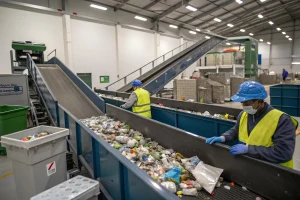Table of Contents
Have you ever imagined a drop of waste oil falling to the ground and slowly seeping into the water you drink? You may not see the impact right away, but the toxic chemicals can pollute the soil, contaminate clean water, and threaten health.
It is time to stop underestimating used waste oil. By managing it wisely, you can protect the environment and safeguard the future of the next generation. Let’s take a look at the complete information below!
What Is Waste Oil?
Waste oil is a type of lubricant that is no longer suitable for vehicle engines or industrial machines.
This liquid is classified as hazardous and toxic waste (B3 in Indonesian abbreviation) because it contains chemical compounds that can damage the environment and health.
Hazardous Substances in Waste Oil

After being used, oil becomes contaminated with heavy metals, carbon particles, and other chemicals from the engine combustion process, making it unsafe to dispose of carelessly.
Waste oil contains various hazardous substances that can contaminate soil and water because they are difficult to decompose naturally. It usually contains:
- Heavy metals such as lead (Pb), chromium (Cr), and cadmium (Cd) can damage ecosystems and disrupt human health.
- Polycyclic aromatic hydrocarbons (PAHs) are organic compounds known to be carcinogenic.
- Residual fuel and chemical additives from the engine’s operation increase the toxicity of the oil.
- Acids and oxidation compounds resulting from high temperatures during engine operation.
Read also: 10 Efforts That Can Be Made to Overcome Environmental Pollution
The Impact of Waste Oil
According to Law No. 32 of 2009, waste oil is classified as hazardous and toxic waste. This means that the waste must be disposed of through proper procedures. Waste oil that is disposed of carelessly poses a significant threat to the ecosystem and human health.
Its nature, containing heavy metals, toxic organic compounds, and fuel residues, prevents this waste from decomposing quickly in nature. Here are some of the common impacts of careless waste oil disposal:
1. Soil Deterioration
When waste oil is poured onto the ground, its chemicals seep in and poison the microorganisms that make the soil fertile. As a result, plants find it difficult to grow, and the land becomes barren.
Even the groundwater beneath can become contaminated, making it dangerous for daily use.
2. Water Pollution
One liter of waste oil can contaminate up to one million gallons of clean water. Imagine if the oil flows into a ditch or river; the oil layer will cover the water’s surface, making it difficult for oxygen to be absorbed.
This can pollute the water and endanger the animals that live in it. In addition, dirty river water is not suitable for daily use.
3. Highly Flammable
Waste oil contains highly flammable compounds. Small drops left on the ground or garage floor can become a fire hazard when exposed to sparks.
Some people even use waste oil as fuel to light fires, even though this practice can potentially cause large fires that threaten life and property.
Regulations on Waste Oil Disposal

In Indonesia, the procedures for disposing of waste oil are regulated in Government Regulation No. 22 of 2021 on Environmental Protection and Management.
This regulation requires every waste producer to follow several procedures to prevent environmental pollution, including temporary storage, labeling, transportation, storage in special containers, and further management.
For the management of hazardous waste, including waste oil, there is usually an official management code or classification to identify the waste clearly. The code for waste oil is B105d.
Read also: 10 Examples of Hazardous Waste and Their Characteristics
Waste Oil Treatment Stages

The management of waste oil involves planned steps to ensure it is safe and compliant with regulations. Here are the recommended steps so you do not get confused about where to dispose of used waste oil:
1. Storage in Special Containers
Waste oil must be immediately placed in containers that are leak-proof and not easily damaged. Choose metal drums or thick plastic jerry cans with tight lids. Place the containers in a dry area protected from rain and direct sunlight to prevent spills and leaks.
2. Labeling and Symbols
Each container must be clearly labeled with information on the type of waste, the identity of the producer, and the date of filling. Attach a hazardous waste (B3) symbol and a waste oil sign so that transporters and managers can easily recognize it.
3. Temporary Storage
Before being handed over, waste oil can be stored in a safe location away from waterways and residential areas. The storage area must be flood-free, have an impermeable floor, and be equipped with spill containment channels to prevent contamination of the soil or water.
4. Transportation by Authorized Parties
After the storage stage, waste oil is transported using special vehicles designed for hazardous waste.
Containers must be tightly sealed, properly labeled, and accompanied by a manifest document containing the type, quantity, and origin of the waste.
Truck drivers who transport waste are also required to receive training in the transportation of hazardous waste to ensure a safe process.
5. Management and Recycling
At official processing facilities, waste oil undergoes purification processes such as filtration, distillation, and re-refining. These methods separate impurities and hazardous additives to produce a base oil that can be reused.
This recycling reduces the amount of waste, lowers the demand for new petroleum, and reduces the risk of soil and water pollution.
In essence, waste oil contains heavy metals, carcinogenic compounds, and chemicals that are difficult to decompose; these substances can pollute the soil, water, and air while threatening human health.
Government Regulation No. 22 of 2021 regulates the steps for handling waste oil, from collection, labeling, and storage to processing or recycling, so that it does not damage the environment.
By distributing waste oil to official management parties and supporting the recycling process, everyone can help conserve the earth and natural resources, thereby protecting future generations.
In line with the spirit of nature conservation, Warga Asri can also help spread information about the dangers of indiscriminate waste oil disposal and encourage people to care more through the #AksiAsri movement from Indonesia Asri.
Every small step, including how you dispose of waste oil, plays a significant role in keeping the earth safe for future generations.
So, let’s not wait any longer. Ensure proper waste oil management, support #AksiAsri, and register to join the movement to keep the environment clean and free from pollution.
Read also: What Is Zero Waste? Learn the Benefits and How to Apply It










